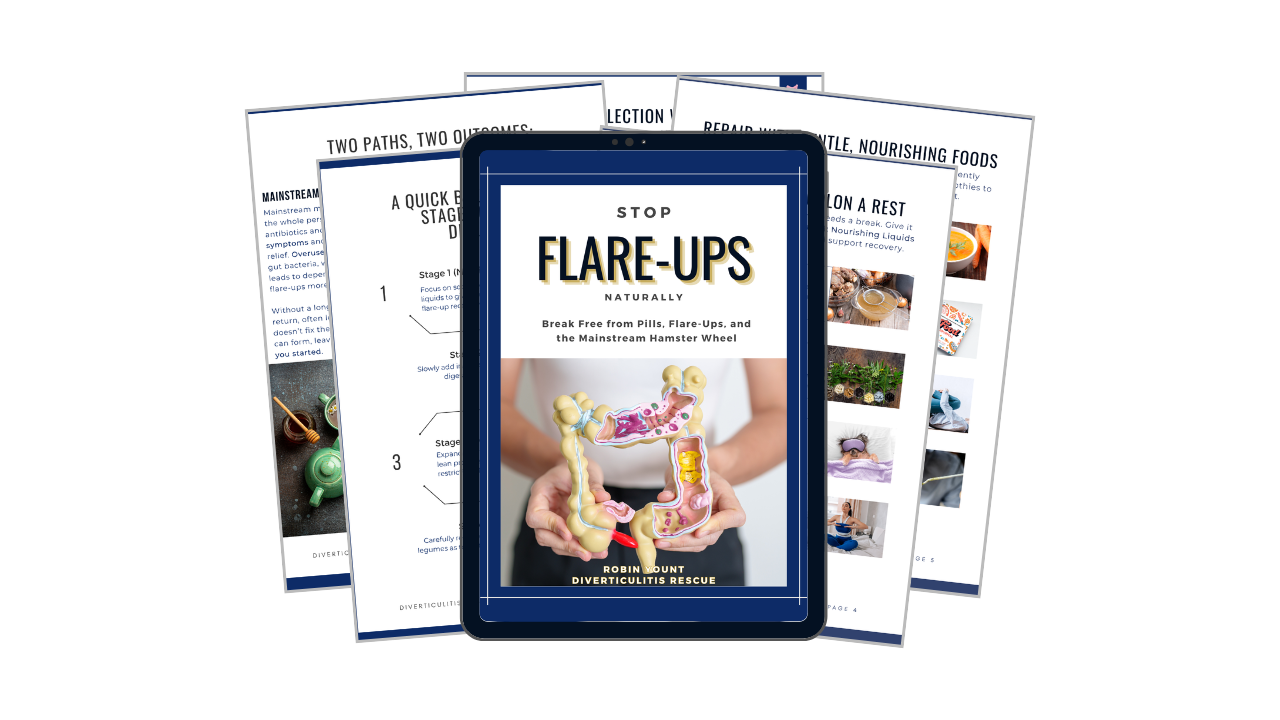Turning Pain Into Purpose: Healing Your Gut, Healing Your Life
Dec 09, 2024
I remember the moment I realized something had to change. My body was screaming for help—flaring, bloated, exhausted—and my mind wasn’t far behind. It felt like I was walking through quicksand, juggling the stress of daily life with the unrelenting symptoms of diverticulitis.
I thought, How did I get here? But even more importantly, How do I get out?
Healing became an act of rebuilding my life—one meal, one breath, and one small choice at a time.
If you’re feeling stuck in your own struggle, let me tell you: healing is possible. It’s not easy, but it’s worth it. And it begins with reconnecting—with yourself, your body, and a supportive community.
How My Gut Told My Story: A Wake-Up Call
When I was at my worst, I didn’t know where to start. My health was in shambles, my stress levels were through the roof, and I felt like there was no way out. The hardest part wasn’t the symptoms themselves—it was feeling disconnected from my own body.
I started with deliberate, small changes:
- Eating clean: I went beyond simply cooking meals and began paying attention to what I was cooking. I read every label, cut out processed foods, and focused on whole, organic ingredients that would support my healing.
- Unpacking my emotional baggage: Therapy helped me process past trauma and recognize how unresolved stress and emotions were weighing me down—mentally and physically.
- Diving into movement: I didn’t just dip a toe into exercise; I jumped in. Yoga gave me space to breathe and connect with my body, while Zumba brought joy and a much-needed dopamine boost. Movement became an essential part of my stability.
At first, it felt like climbing a mountain, but each step built more strength and hope. Healing wasn’t just about food or exercise—it was about addressing years of stress, trauma, and disconnection that had built up in my mind and body.
Your Gut Is Talking to You—Are You Listening?
Gut health is more than digestion; it’s deeply tied to your mind and emotions. Your vagus nerve connects your gut to your brain, creating a two-way street where stress can trigger symptoms—and vice versa.
When my stress levels were sky-high, my symptoms worsened. It wasn’t just a physical response; it was my body begging for attention. I started to truly listen through food journaling, mindfulness, and small lifestyle changes. Bit by bit, things began to shift.
Your gut is always sending you signals. Are you tuning in?
Curious about starting your own food journal? Check out my 30-Day Diverticulitis Food Journal designed specifically for tracking symptoms and patterns.
The Healing Power of Connection
One of the most unexpected keys to my recovery was finding a sense of community. At a time when I felt isolated and depressed, joining a local YMCA gave me more than a place to exercise—it gave me connection and purpose!
I’ll be honest—there were days I didn’t want to get out of bed. But the friends I made kept me accountable. Knowing they were there waiting for me got me out the door, and I never regretted showing up. Every class brought a dopamine hit, and every smile reminded me I wasn’t alone.
Healing is easier when you don’t have to do it alone. Whether it’s connecting in an exercise class, joining a support group, or becoming part of our Diverticulitis Rescue Community, having others who understand your journey can make all the difference.
Practical Tips for Your Gut-Healing Journey
-
Follow the 4 Stages of Eating for Diverticulitis
Your diet is the foundation of healing. Begin with Stage 1 to rest your gut, then progress mindfully through each stage as your body allows. Each phase builds a stronger foundation for managing symptoms and preventing flare-ups. (Get started with my free Quick Guide to learn more.) -
Track Your Triggers with Intention
A food journal isn’t just about what you eat—it’s about uncovering patterns in your symptoms, stress, and habits. Recording your meals alongside factors like stress, sleep, and hydration can help you pinpoint triggers and make informed changes. -
Make Stress Management a Daily Practice
Mind-body connection is everything. Try deep breathing before meals, a gentle yoga stretch, or even a 5-minute mindfulness practice. These small moments can calm your nervous system, reduce inflammation, and improve digestion. -
Embrace Nourishing Foods
Start with gut-friendly staples like bone broth, mashed root vegetables, and squash. As you progress, introduce variety while keeping meals simple and clean. Healing isn’t about restriction—it’s about fueling your body with what it truly needs. -
Celebrate Small Wins
Every step forward is progress. Whether it’s a day without symptoms or a new food you tolerate well, take time to acknowledge and celebrate those victories. Healing is a journey, and every win brings you closer to balance and resilience.
Healing Is a Journey, Not a Destination
Rebuilding your gut health and stopping diverticulitis flare-ups isn’t just about food—it’s about creating a lifestyle that supports your body, mind, and spirit. Small, consistent steps can lead to profound transformation, even when the road feels challenging.
Ready to take your next step?
Start your journey with my free Quick Guide to the 4 Stages of Eating for Diverticulitis and build a foundation for a flare-free, balanced life. 🌿
Stay Connected with My Newsletter
YOUR SOURCE FOR DIVERTICULITIS SUPPORT & INSPIRATION
Dive into Resilient Roads: Tales of Health and Healing, the Diverticulitis Rescue newsletter. Each edition delivers personal stories, natural strategies, and practical tips to help you find balance, relief, and strength on your journey.
Sign up with your email to stay connected, gain exclusive insights, and access resources designed to support your gut health and overall well-being.
We hate SPAM. We will never sell your information, for any reason.




